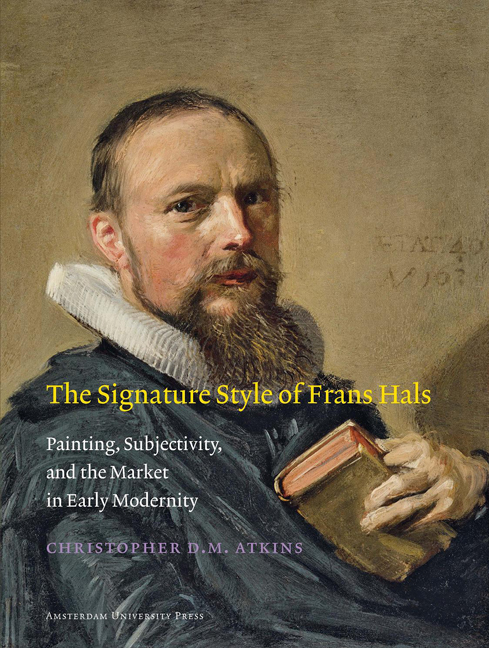Chapter 1 - A Liveliness Uniquely His
Published online by Cambridge University Press: 14 January 2021
Summary
Nor can I let this pass in mute silence, Frans and Dirck Hals, brothers, of whom one excels almost everyone with the superb and uncommon manner of painting which is uniquely his. His paintings are imbued with such force and vitality that he seems to surpass nature herself with his brush. This is seen in all his portraits, so numerous as to pass belief, which are colored in such a way that they seem to breathe and live.
—Theodorus Schrevelius, 1648Schrevelius's brief characterization indicates that Hals's contemporaries found his manner of painting lively and unique. As naturalism in its various forms was the dominant mode of representation in the Dutch Republic in the seventeenth century, praise for an artist's ability to create a “living image” was a standard trope for many writers, but Schrevelius's description differs from common literary adulation by addressing both the effect of vitality that Hals was able to achieve and the means by which he crafted it. Indeed, with Schrevelius's words in mind, we see more readily how different Hals's vivacity was from that of both his predecessors and his contemporaries, especially in portraiture.
This chapter explores the vitality of Hals's imagery, the techniques he developed to render his subjects as lively, and the ways in which Hals's conception and execution differ from the representational strategies of his contemporaries, especially those of other portraitists in Haarlem. Since it has always been taken as a given that Hals worked spontaneously and directly, none have systematically considered why he sought to craft lively imagery or how exactly he created the illusion of spontaneity in a multi-stage process. I will describe how Hals used broad, unblended strokes and stark contours to convey a sitter's energy, animation, and temporality, which in turn rendered his subjects as distinct individuals. This approach distinguished his paintings from those of others. While Hals was not the only painter striving for naturalism, his manner was as unique as Schrevelius described.
Lively Paintings/Painting Liveliness
The pendants of Stephanus Geraerdts (fig. 1) and Isabella Coijmans (fig. 2), both from about 1650-52, introduce how Hals employed temporal signs to craft extremely lively figures. Cocking his head to his right, Geraerdts stands casually with his left arm akimbo.
- Type
- Chapter
- Information
- Signature Style of Frans HalsPainting, Subjectivity, and the Market in Early Modernity, pp. 25 - 84Publisher: Amsterdam University PressPrint publication year: 2012



